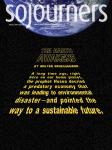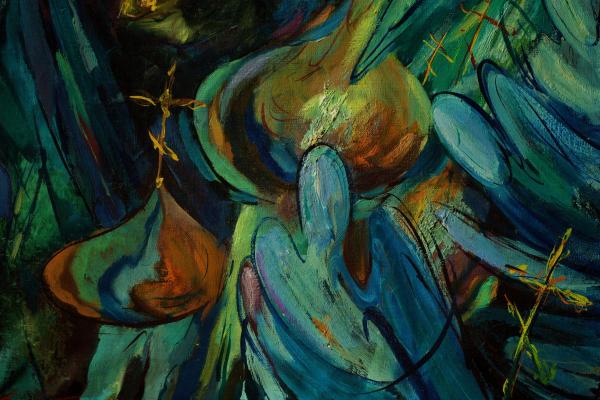SHORTLY BEFORE Irish poet Seamus Heaney died in 2013, he texted these last words to his wife, Marie: Noli timere. Be not afraid.
I'm not sure if Heaney, who was described by Robert Lowell as "the most important Irish poet since Yeats," knew this was his last text and final words, but I suspect he did.
It's a sad commentary that when the Twitterverse got hold of Heaney's message, no one could figure out what it meant or where it was from. Many did not recognize the angels' message to Zechariah (Luke 1:13) or Mary (Luke 1:30) or the shepherds (Luke 2:10) or Joseph in a dream (Matthew 1:20): Be not afraid.
Heaney understood words as "bearers of history and mystery." As a distinguished translator of poetry from Greek, Latin, Italian, Irish, Anglo-Saxon, and Middle Scots, he had plenty of languages to choose from. But he chose St. Jerome's fourth century vulgate version of the Bible. He chose the language of the angels.
In "Alphabets," Heaney describes a boy learning Latin:
Declensions sang on air like hosanna
As, column after stratified column,
Book One of Elementa Latina,
Marbled and minatory, rose up in him.
That Latin, learned first from his mother, then in school, Heaney later described as a "shape-note language," as "the risen, aqueous, singular, lucent O / Like a magnified and buoyant ovum."
During the final seven days of Advent, we sing the O Antiphons, calling out the names of Christ: O Sapientia (wisdom). O Radix Jesse (root of Jesse). O Oriens (dayspring). We sing "O Come, O Come Emmanuel." Then candle-lit churches fill slowly with "O Holy Night" until joy reaches the roofline and spills out onto the world.
But what of Heaney's final words? Noli timere. Luke's gospel holds a taut paradox around the theme "to fear" and "not to fear," both of which Jesus commands. The fear that Mary articulates in the Magnificat and in her encounter with the angel is not a panic that diminishes but instead an overwhelming gratitude at the mystery of goodness. The other fear—terror, anger, shock—is one Jesus cautions against. Fear in this sense can be antithetical to belief.
Today our fears can be equally crippling. Fear for our safety. Fear of economic insecurity. Fear of rejection or commitment. Fear of failing, loss, or death. Sadly, our market economy has even monetized fear. The more our fears increase, the more somebody can make a buck off them.
Can we hold open Heaney’s “lucent O” within us long enough to expose our deepest fears, to take the angel’s message to heart? Unexamined fear paralyzes. Fear as a perpetual state keeps us small. Fear refuses magnificence. It shackles the tongue, chokes back hosannas.
One of Heaney's earliest poems, "Scaffolding," was written for his wife, Marie, in a difficult moment in their marriage. "So if, my dear, there sometimes seems to be / Old bridges breaking between you and me / Never fear. We may let the scaffolds fall / Confident that we have built our wall."
Love and fidelity, both tender and tough, keep fear beyond the door.
When news spread of Heaney's death and last text message to his wife, an Irish graffiti artist named Maser painted "Don't Be Afraid" in block letters on the side of a building in a gritty part of Dublin. He did it, he said, "for good people in hard times."
Noli timere, as if the angel Gabriel spray-painted it there himself.

Got something to say about what you're reading? We value your feedback!

